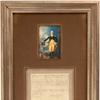The Harvard Art Museums Present Corita Kent and the Language of Pop
- CAMBRIDGE, Massachusetts
- /
- June 20, 2015
The Harvard Art Museums has announced the upcoming special exhibition Corita Kent and the Language of Pop, on display September 3, 2015 to January 3, 2016 at Harvard before travelling to the San Antonio Museum of Art, where it will be on view February 13 to May 8, 2016. The exhibition is curated by Susan Dackerman, the former Carl A. Weyerhaeuser Curator of Prints at the Harvard Art Museums (2005–2014) and current consultative curator of prints. Corita Kent was an activist nun who juxtaposed spiritual, pop cultural, literary, and political writings alongside symbols of consumer culture and modern life in order to create bold images and prints during the 1960s. Also known as Sister Mary Corita, Kent is often seen as a curiosity or an “exception” in the pop art movement. Corita Kent and the Language of Pop positions Kent and her work within the pop art idiom, showing how she is a creative contemporary of Andy Warhol, Ed Ruscha, and other pop art icons. The exhibition also refines the current scholarship on Kent’s art, elevating her role as an artist and a true voice in the artistic and cultural movements of her time.
Corita Kent (American, 1918–1986) was a Roman Catholic nun, an artist, and an educator. From 1936 to 1968 she lived, studied, and taught at the Immaculate Heart of Mary in Los Angeles, and she headed the art department at the college there from 1964 to 1968, developing many aspects of her signature style while working alongside her students. In 1968, Kent left Immaculate Heart and relocated to Boston. The screenprints she created during the 1960s are typical examples of pop art, embodying the vivid palette, focus on everyday subjects, and mass-produced quality of ephemeral objects.
Corita Kent and the Language of Pop examines Kent’s screenprints as well as her films, installations, Happenings, and her 1971 mural painted on the Boston Gas (now National Grid) tank, a roadside landmark in Boston.
The exhibition frames Kent’s work within the pop movement while also considering other prevailing artistic, social, and religious movements of the time. In particular, the exhibition explores how Kent’s work both responded to and advanced changes then facing the Catholic Church, brought about by the Second Vatican Council (Vatican II).
“Because of Kent’s status as a nun, her biography has been the focus of most scholarship about her work,” said Dackerman. “However, when you examine her work alongside contemporary pop artists like Warhol and Ruscha, it becomes clear that she was a critical and relevant voice in the emerging pop discourse of the 1960s.”
The exhibition grew out of conversations Dackerman had with Jennifer Roberts, the Elizabeth Cary Agassiz Professor of the Humanities in the Department of History of Art and Architecture (HAA) at Harvard, around the time that Roberts was teaching an undergraduate seminar on pop art during the Spring 2010 semester. Roberts often brought her students to examine prints in the museums’ collections, and these meetings generated discussions about Kent’s work as well as its relationship to the work of her better-known contemporaries such as Warhol, Ruscha, Roy Lichtenstein, and James Rosenquist, among others. The following semester, HAA professors Henri Zerner and Benjamin Buchloh taught a graduate seminar on reproductive technologies in the 1960s, which ignited interest in printed pop among Harvard’s graduate students in art history. Soon after, a project group came
together, providing a forum for conversations about Kent’s work that ultimately led to the development of the exhibition’s six central themes: Los Angeles, c. 1962; The Word; Salvation at the Supermarket; L.A. Traffic; The Political Landscape; and Boston, 1971: The Gas Tank. Kent’s papers, deposited at the Arthur and Elizabeth Schlesinger Library on the History of Women in America at Harvard’s Radcliffe Institute for Advanced Study, were an important resource to the team of scholars and students.
“With the opening of our new facility, we have increased our ability to offer the kind of powerful learning experiences that arise only from close, sustained looking at original works of art. The Harvard Art Museums today give students, faculty, and the public new—and better—opportunities to view, understand, and appreciate these works,” said Thomas W. Lentz, the Elizabeth and John Moors Cabot Director of the Harvard Art Museums. “Corita Kent and the Language of Pop has from its outset embraced that same teaching and learning imperative, with Susan drawing on the expertise of colleagues from Harvard and beyond, and providing a platform for the emerging voices of graduate students from multiple disciplines.”
More than 150 prints, along with a selection of films, books, drawings, photographs, sculpture, and a textile are included in the exhibition. Rarely shown (and newly restored) films by Thomas Conrad and Baylis Glascock that feature Kent at Immaculate Heart in the 1960s are accessible via interactive screens in the gallery. More than 60 of Kent’s prints, depicting pop culture symbols ranging from food products to road signs, will appear alongside over 60 works of art by her prominent contemporaries such as Warhol, Ruscha, Lichtenstein, Jim Dine, and Robert Indiana/
Detailed information about programs is forthcoming at harvardartmuseums.org/visit/calendar
.

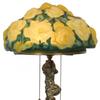
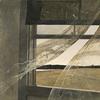




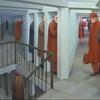

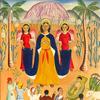
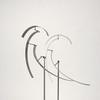
Ser100x100_c.jpg)

